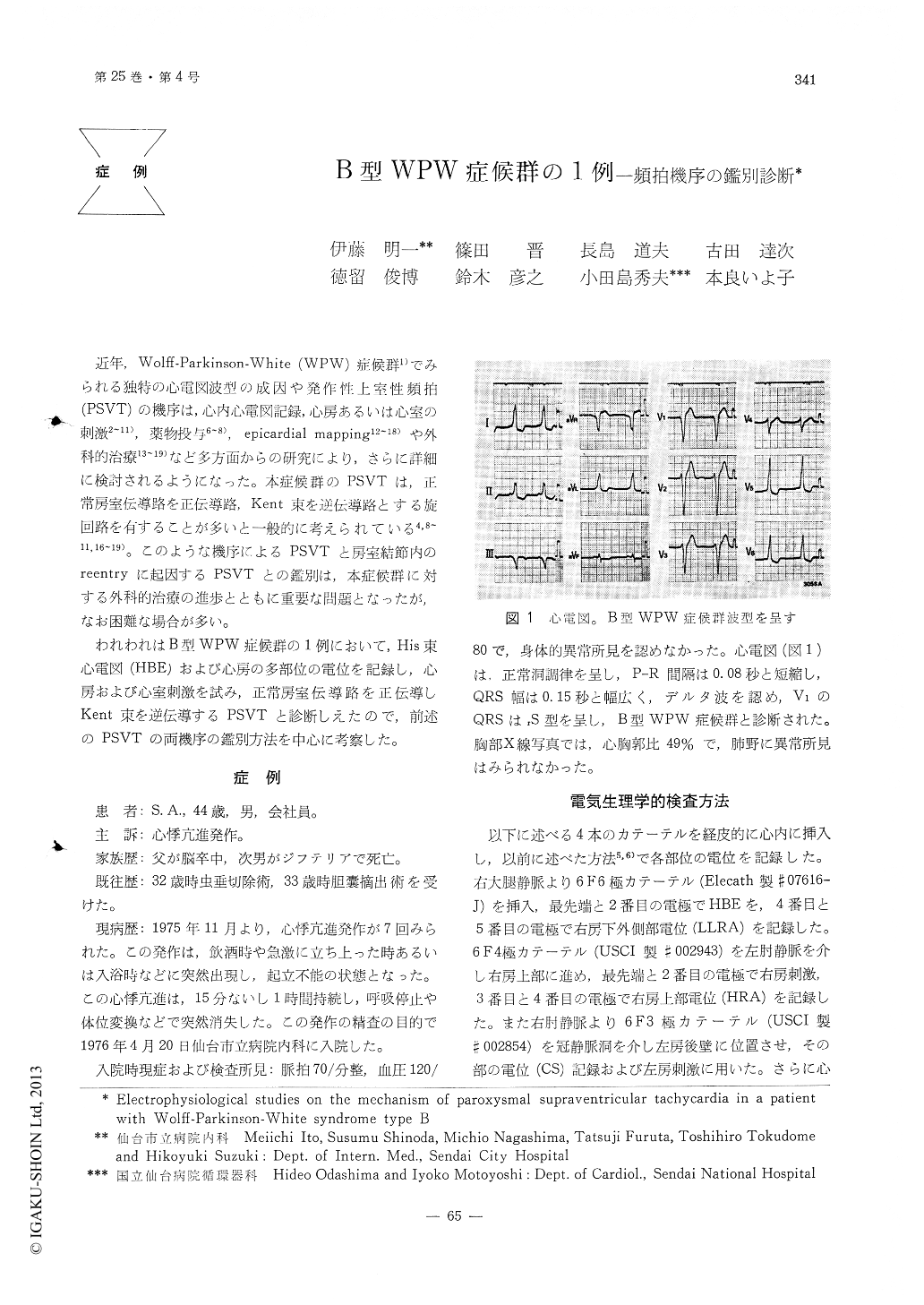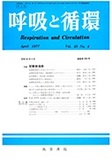Japanese
English
- 有料閲覧
- Abstract 文献概要
- 1ページ目 Look Inside
近年,Wolff-Parkinson-White (WPW)症候群1)でみられる独特の心電図波型の成因や発作性上室性頻拍(PSVT)の機序は,心内心電図記録,心房あるいは心室の刺激2〜11),薬物投与6〜8),epicardial Mapping12〜18)や外科的治療13〜19)など多方面からの研究により,さらに詳細に検討されるようになった。本症候群のPSVTは,正常房室伝導路を正伝導路,Kent束を逆伝導路とする旋回路を有することが多いと一般的に考えられている4,8〜11,16〜19)。このような機序によるPSVTと房室結節内のreentryに起因するPSVTとの鑑別は,本症候群に対する外科的治療の進歩とともに重要な問題となったが,なお困難な場合が多い。
われわれはB型WPW症候群の1例において,His束心電図(HBE)および心房の多部位の電位を記録し,心房および心室刺激を試み,正常房室伝導路を正伝導しKent束を逆伝導するPSVTと診断しえたので,前述のPSVTの両機序の鑑別方法を中心に考察した。
In Wolff-Parkinson-White (WPW) syndrome it is often difficult to differentiate paroxysmal supraventricular tachycardia (PSVT) due to reentry within atrioventricular (A-V) node from PSVT with A-V conduction via the normal A-V conduction system and ventriculoatrial (V-A) transmission through bundle of Kent, especially when the initial atrial excitation occurs near atrial septum. A 44-year-old man with WPW syndrome type B was studied electrophysiologically because of several episodes of palpitation.

Copyright © 1977, Igaku-Shoin Ltd. All rights reserved.


